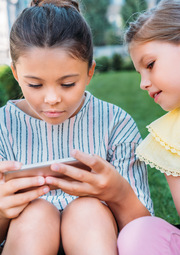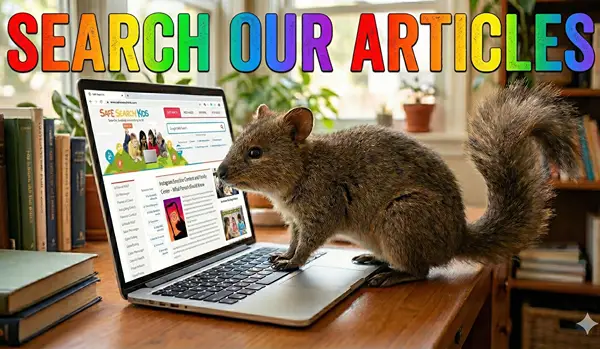App Traps: Hidden Dangers in Kid-Friendly Games
Although video games have been around for decades, the landscape has dramatically changed from when we played Super Mario Brothers in the basement. Today, video games are not only played on gaming consoles, but they are played on PCs, laptops, touchscreen tablets, and mobile devices.
With more devices and games to choose from than ever before, the global video game market has exploded to an estimated $217.06 billion in 2022. So, not only is gaming access and popularity increasing, but so is connectivity. Most video games now require an internet connection, further exposing children to some of the dangers of gaming, such as cyberbullying and predatory in-app purchases.
But it’s not simply these types of threats that parents should be concerned about; parents should also be worried about how spending too much time playing video games can affect a child’s physical and mental health, social behavior, and cognitive development. There is a distinct line between healthy and unhealthy gaming.
As parents, let’s take a closer look at the hidden dangers of video games, including the consequences of excessive consumption, and offer some healthy alternatives that can entertain while better fostering your child’s development.
Potential Threats Commonly Found in Kid-friendly Games and Apps
There are many threats found in kid-friendly games and apps that are hard to prevent your child from being exposed to. To make matters even worse, all of this is pretty much impossible to avoid nowadays.
However, the best thing you can do is educate yourself and your child about the dangers and provide a safe space for them to come to you and talk to you about anything. Open communication is critical.
At the same time, you should also know every game and app that your child uses and explore if they have parental controls that you can use.
For example, Roblox, one of the most popular games for children worldwide, has a feature where parents can limit and monitor who their child is playing and communicating with on the platform and several online privacy settings you can enable.
Many games and apps have similar features for parents, so be sure to conduct research before allowing your child to play a new game. Don’t be afraid to write an email to the developers themselves, either!
So, without further ado, let’s break down some of the most common threats children face when using online games and apps.
Cyberbullying/Online Predators
Cyberbullies and online predators are a constant threat that not only come from online gaming but also from social media. Although trying to keep your children safe from cyberbullying and online predators is a monumental task, you should know the red flags that indicate your child is being bullied online.
From mood swings and bouts of depression and anxiety to loss of sleep, lack of appetite, and withdrawal from family and friends, many emotional symptoms and behavioral changes could be clues that your child is being bullied.
When it comes to online predators, you must have consistent conversations with your children about not sharing personal information with strangers online and the dangers of “meeting up” with someone you only met through an online game or social media. Sometimes, people may not be who they say they are; instead, they have harmful intentions.
Hidden Fees/In-app Purchases
Hidden fees and in-app microtransactions are some of the biggest scams to hit video games and apps. From paying for virtual currencies, weaponry, and special abilities to eliminating in-game advertisements, video games have become incredibly creative about how they trick children into spending money.
Never attach a credit card to your child’s gaming profile, and if your child is using your smartphone or tablet to play games and use apps through Apple or Google Play, make sure you password-protect all purchases and switch off “in-app updates.”
If you want to educate your child about responsible spending, you can create an online-only debit card and put a part of their allowance in it, just to see how it feels spending their own money.
Malware
Sometimes, cybercriminals can modify popular and legitimate apps with malware and upload them to Google Play or Apple without being detected. These apps then install Trojans, adware, and spyware on your devices without you knowing.
Ensure you approve all of the games and apps your child would like to download before they do. Password-protect downloads if you have to. Also, pay attention to recent reviews and news stories about recently discovered breaches, and teach your child how to recognize scams and illegitimate apps. It’s an excuse for you to up your tech knowledge, too!
Links to external malicious sites
Another major threat from online games and apps, especially those that involve multi-player gameplay, is messages containing links to external malicious sites that can download malware and other harmful files.
The best way to prevent this is to teach your kids about internet safety from an early age, including the importance of never clicking on suspicious links and other common-sense safety rules about being online.
Adverse effects of excessive gaming and screen time
Again, there is a significant difference between healthy and unhealthy gaming. Extreme gaming for a child could be considered any amount that disrupts their normal daily functioning.
For instance, the American Academy of Child and Adolescent Psychiatry (AACAP), recommends no more than 2-5 hours of screen time, with only 1 hour being devoted to non-educational activities.
Also, excessive gaming and screen time have been linked to these adverse side effects.
- Physical: obesity, insomnia, neck and back problems, and eye strain.
- Mental: impulsive actions, behavioral problems, prone to violence, anxiety, and depression.
- Emotional: mood swings, withdrawal from friends, family, and school, and stunted emotional growth
Again, it is impossible to eliminate all screen time. Between school work and entertainment, your child will be in front of a screen, using apps and playing games almost daily.
Just be mindful of how much time they spend in front of a screen and try to facilitate and encourage healthy alternatives that your child can enjoy.
Healthy Alternatives to Video Games and Screen Time
While the digital realm is often filled with addictive and predatory content, the real world offers a plethora of educational and safe alternatives. Engaging in physical, creative endeavors enhances a child’s motor skills and nurtures their imaginative capabilities.
Here are some everyday physical and creative activities outside the digital realm that can help your child’s mental, physical, emotional, and social development.
Art Projects
Suitable art activities can significantly contribute to a child’s development by allowing them to express themselves in a wholesome and unrestrictive environment. Parents may find that by swapping screen time with time spent on crafting, drawing, or painting; children are more likely to develop essential skills such as problem-solving, creativity, and even social abilities when working on group art projects.
Moreover, the absence of hidden digital threats ensures a safer, enriching experience. By replacing a portion of digital playtime with artistic pursuits, parents can provide a balanced, risk-free entertainment diet for their young ones.
Sports
There have been many studies about the benefits of sports for children. Sports offer a healthy alternative to screen time that can help build their coordination and balance as well as their bones, muscles, and ligaments. Kids who play sports also reduce their risk of obesity and are more likely to learn healthy physical habits that they carry into adulthood. Other benefits include improved sleep, greater concentration, and increased social skills.
Educational Travel/Field Trips
Educational travel and field trips are another great source of entertainment that keeps kids learning. Museums, art galleries, national parks, monuments, historical sites, and the theater entertain a child’s imagination and curiosity while contributing to healthy development.
The Bottom Line
The bottom line is online games and apps are fun to play and a good source of entertainment. We are not trying to say that all online gaming is inherently evil and detrimental to children; we are saying that it is essential that you and your child are aware of all the potential risks, and that you know how to mitigate them.
At the same time, it is not just cybersecurity and social threats that should concern every parent; it’s online safety as a whole we need to focus on. That is why, besides educating children about online threats, we also need to limit the time they spend in front of a screen and provide them with healthy alternatives that entertain and foster healthy and enriching development.
About the Author:
Ryan Harris is a copywriter focused on eLearning and the digital transitions going on in the education realm. Before turning to writing full time, Ryan worked for five years as a teacher in Tulsa and then spent six years overseeing product development at many successful Edtech companies, including 2U, EPAM, and NovoEd.











